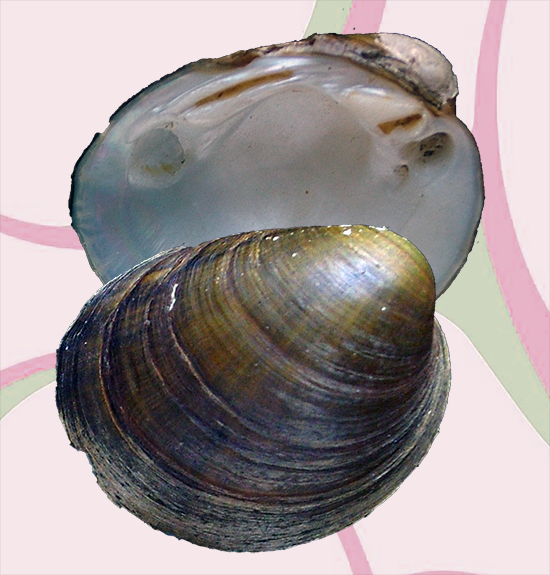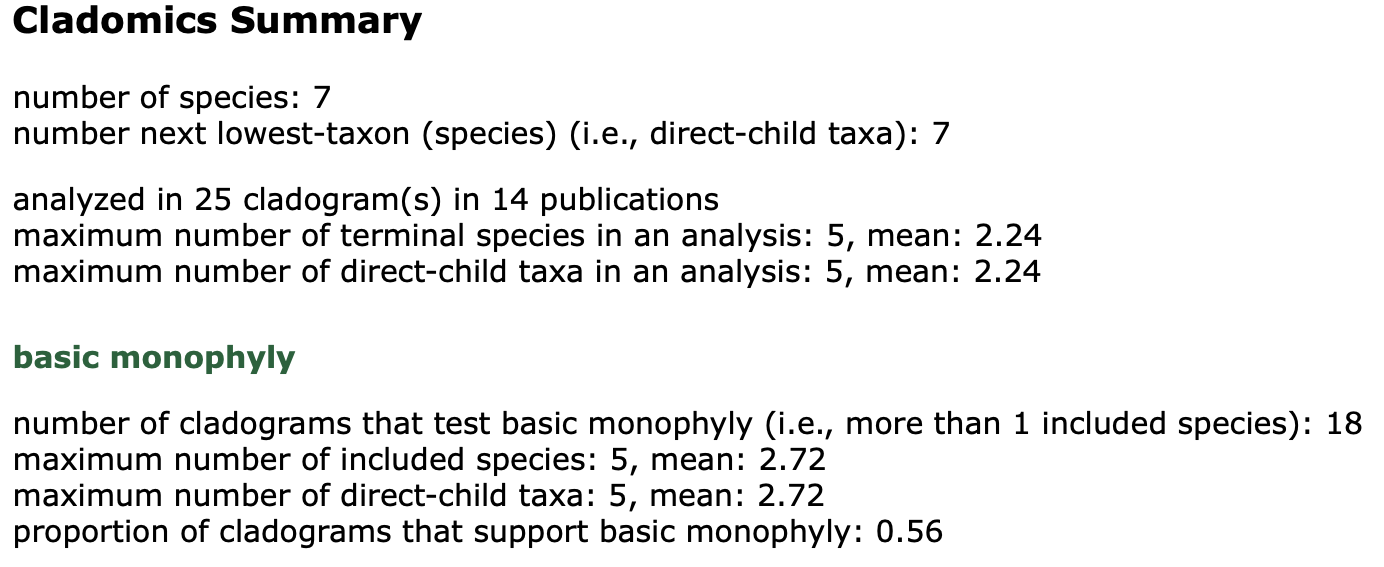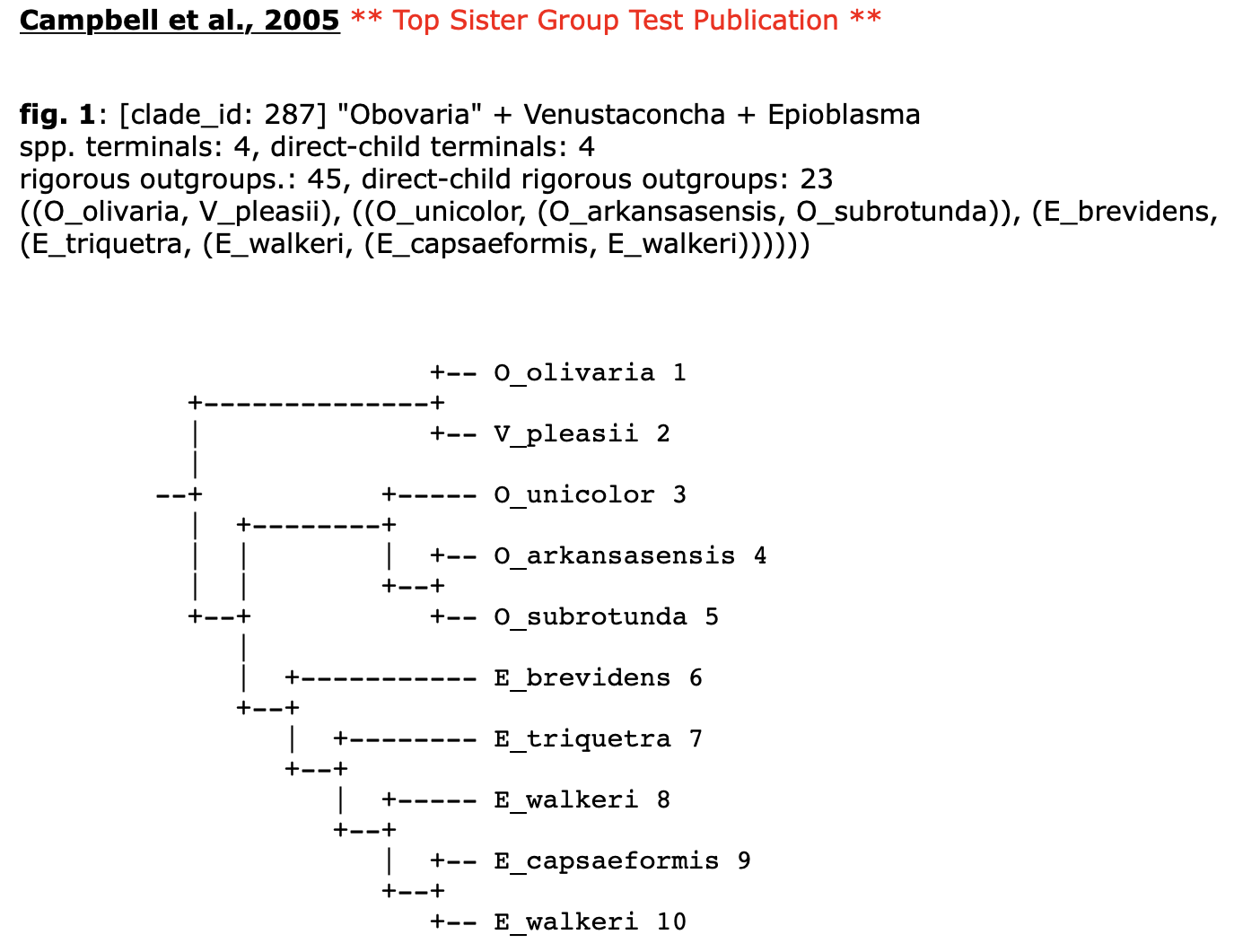|
Page last updated
6 August 2021 |
Mussel of the Month
The August 2021 Mussel of the Month is Obovaria olivaria. Obovaria is a genus of seven species in eastern North America, from the drainages of the Gulf of Mexico north to the Great Lakes.

ANSP 56614. Ohio River. (syntype of Unio ellipsis Lea, 1828)
|
Back in May 2011, the Mussel of the Month was Obovaria unicolor. After 10 years, it is worth revisiting Obovaria again.
The thing is, it is unclear if Obovaria is a natural genus — that is, monophyletic. The genus has been consistently regarded as valid since Simpson (1900), and Ortmann (1912) gave his stamp of approval based on the combination of shell and soft-anatomical characters.
In this millennium, there has been some shuffling of species. Specifically, the former “Obovaria” rotulata was shifted briefly to Fusconaia before Reginaia was invented for it and R. ebenus (Campbell & Lydeard, 2012), the old “Villosa” arkansasensis was discovered to be a senior synonym of what we used to call Obovaria jacksoniana (Inoue et al., 2013), and what were “Lampsilis” haddletoni and “Villosa” choctawensis have joined Obovaria as well (Williams et al., 2008, 2011). Our most recent checklist is up-to-date on Obovaria and documents these recent changes (Graf & Cummings, 2021).
The new “Cladomics” feature on the MUSSELp database web pages, however, spotlights the shaky phylogenetic foundation for Obovaria, even with all this recent attention. According to the Obovaria Cladomics page, there have been 25 cladograms published in 14 articles that include a terminal taxon classified as Obovaria. In those works, Obovaria is recovered as monophyletic only 56% of the time! This, even though the mean number of ingroup terminals is less than 3 — i.e., even when a small number of species are sampled, those classified as Obovaria may not have been recovered as a clade!

The Obovaria Cladomics page lists the top studies with regard to ingroup sampling. In some, Obovaria is not consistently resolved as monophyletic because Venustaconcha gets between Obovaria olivaria and the other species of Obovaria (including the type, O. retusa) (Campbell et al., 2005; Zanatta & Murphy, 2006). But other studies that did recover O. olivaria in a clade with the rest of the Obovaria species didn’t include Venustaconcha in their analyses (Inoue et al., 2013; Porto-Hannes et al., 2019). In the absence of a consistent alternative classification, Obovaria stands.

The problematic species for Obovaria is our current Mussel of the Month, Obovaria olivaria. If someday someone decides that that species really doesn’t belong in the same genus as Obovaria retusa, we are in luck — the genus name Pseudoon Simpson, 1900 is available! (Never mind that it looks like a typo for Pseudodon.) |
|
Classification:
Phylum Mollusca
Class Bivalvia
Subclass Palaeoheterodonta
Order Unionoida
Superfamily UNIONOIDEA Rafinesque, 1820
Family UNIONIDAE s.s.
Subfamily AMBLEMINAE Rafinesque, 1820
Tribe LAMPSILINI Ihering, 1901
Genus Obovaria Rafinesque, 1819
[+ Pseudoon Simpson, 1900]
Species Obovaria olivaria (Rafinesque, 1820) |
To find out more about Obovaria and its taxonomic shenanigans, check out:
- Campbell, D.C. & C. Lydeard. 2012. The genera of the Pleurobemini (Bivalvia: Unionidae: Ambleminae). American Malacological Bulletin 30(1): 19-38.
- Campbell, D.C., J.M. Serb, J.E. Buhay, K.J. Roe, R.L. Minton & C. Lydeard. 2005.Phylogeny of North American amblemines (Bivalvia, Unionidae): prodigious polyphyly proves pervasive across genera. Invertebrate Biology 124(2): 131-164.
- Graf, D.L. & K.S. Cummings. 2021. A 'big data' approach to global freshwater mussel diversity (Bivalvia: Unionoida), with an updated checklist of genera and species. Journal of Molluscan Studies 87(1): 1-36.
- Inoue, K., D.M. Hayes, J.L. Harris & A.D. Christian. 2013. Phylogenetic and morphometric analyses reveal ecophenotypic plasticity in freshwater mussels Obovaria jacksoniana and Villosa arkansasensis (Bivalvia: Unionidae). Ecology and Evolution 3(8): 2670-2683.
- Ortmann, A.E. 1912. Notes upon the families and genera of the najades. Annals of the Carnegie Museum 8: 222-365.
- Porto-Hannes, I., L.B. Burlakova, A.Y. Karatayev & H.R. Lasker. 2019. Molecular phylogeny, biogeography, and conservation status of the Texas-endemic freshwater mussel Lampsilis bracteata (Bivalvia, Unionidae). Zootaxa 4652(3): 442-546.
- Simpson, C.T. 1900. Synopsis of the naiades, or pearly fresh-water mussels. Proceedings of the United States National Museum 22: 501-1044.
- Williams, J.D., A.E. Bogan & J.T. Garner. 2008. Freshwater Mussels of Alabama and the Mobile Basin in Georgia, Mississippi and Tennessee: 908.
- Williams, J.D., R.S. Butler & J.M. Wisniewski. 2011. Annotated synonymy of the Recent freshwater mussel taxa of the families Margaritiferidae and Unionidae described from Florida and drainages contiguous with Alabama and Georgia. Bulletin of the Florida Museum of Natural History 51(1): 1-84.
- Zanatta, D.T. & R.W. Murphy. 2006. Evolution of active host-attraction strategies in the freshwater mussel tribe Lampsilini (Bivalvia: Unionidae). Molecular Phylogenetics and Evolution 41(1): 195-208.
|